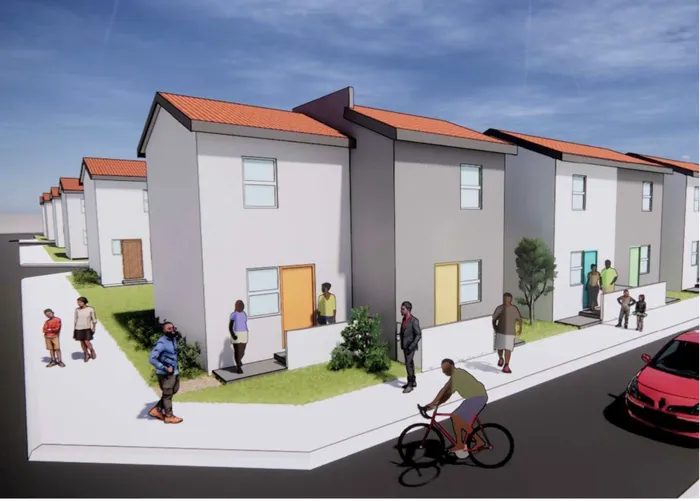How the housing crisis impacts low-income families in South Africa

An artist’s impression of the proposed housing projects on Highlands Drive.
Image: Supplied
As Minister Thembi Simelane tables the Department of Human Settlements (DHS) budget vote on Wednesday, South Africa’s low-income households contend with an acute shortage of formal housing stock.
According to data analysed by Lightstone, a provider of analytics and systems on property, there was one property for 4.8 households earning under R13 000 a month.
The ratio improved to 3.3 households for every one formal property if the salary threshold moved to R26 000 a month, said Hayley Ivins-Downes, the managing executive for real estate at Lightstone Property.
For higher income groups, this ratio was closer to 1.2 to 1.
“Either way, more than 80% of South Africa’s households earned under R26 000 per month, which meant affordability remained a major obstacle to most households having a property to call their own,” Ivins-Downes said.
The property market intelligence provider said there were nearly 12 million households earning less than R13 000 a month, with just under 2.5 million properties available if households stuck to the guideline that they spend no more than a third of their income on housing.
Ivins-Downes said this was the most significant gap between households and property available by some distance.
“For example, there were another 2.5 million households earning between R13 000 and R26 000 per month, but there were 1.8m properties available, which translated into 1.3 households for every property available.”
Interestingly, there were more properties available than households in the R26 000 to R40 000 salary range.
In Johannesburg, couples without matric were said to find affordable stock in areas such as Hillbrow, Johannesburg Central and Orange Farm, while couples with degrees would be buying in suburbs such as Morningside, North Riding and Weltevreden Park.
The Fact Sheet that draws the attention of policymakers and other stakeholders to the progress made by South Africans in terms of their highest levels of educational attainment (HLEA), said the proportion of the 25–64-year-old population that had secondary (Grade 12 or equivalent) as the HLEA increased from 27.4% in 2015 to 33.0% in 2023.
Persons with the certificates in 2023 of the 25–64-year-old group were at about 3.3%.
In 2023, about 6.0% of South Africans aged 25-64 years had a diploma as their HLEA, while 7.3% of this age group had a degree as their HLEA.
The largest proportion of the population aged 25–64 years (36.7%) had some secondary education as their HLEA, while 12.4% of persons in this age group had primary education or less than primary as their HLEA.
Lightstone said their insights underscored the need for integrated housing, education, and economic policies to address the real barriers facing South Africa’s lower-income households.
In May, RB Property Group said it advocated for a multi-sectoral approach to housing, one that not only builds homes but also builds communities.
The property industry player said it believes that the key to transforming South Africa’s housing crisis lies in moving the majority of LSM 1-3 households into LSM 4-6 through job creation, enterprise development, and skills training. It said this requires aligning housing development with sustainable job creation, skills development, and long-term economic participation.
Get your news on the go, click here to join the Cape Argus News WhatsApp channel.
Cape Argus
Related Topics: